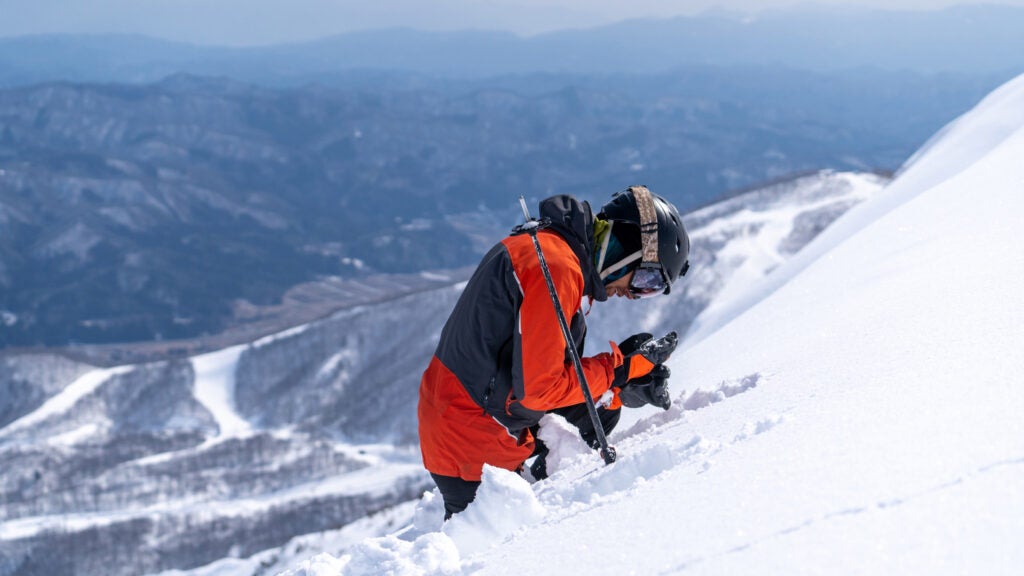No products in the cart.
Outdoor Adventure
The Best Snow Safety Gear of 2024
There’s always room for improvement when it comes to snow safety tech. Avy bags can get less cumbersome. Headlamps can stay juiced up in colder temps. Even bandages deserve a moisture-wicking upgrade now and then. This year was full of those enhancements, with a few standout technologies to help shake up the snow safety industry.
The Winners at a Glance
- Db Snow Pro Vest 8L with Safeback SBX
- Backcountry Access Float E2-25 Avalanche Airbag
- Garmin InReach Messenger
- Ortovox Bivy Pro
- WoolAid Emergency Pack
- Ledlenser NEO1R Headlamp
The Reviews: The Best Snow Safety Gear of 2024
Editor’s Choice: Db Snow Pro Vest 8L with Safeback SBX ($700)
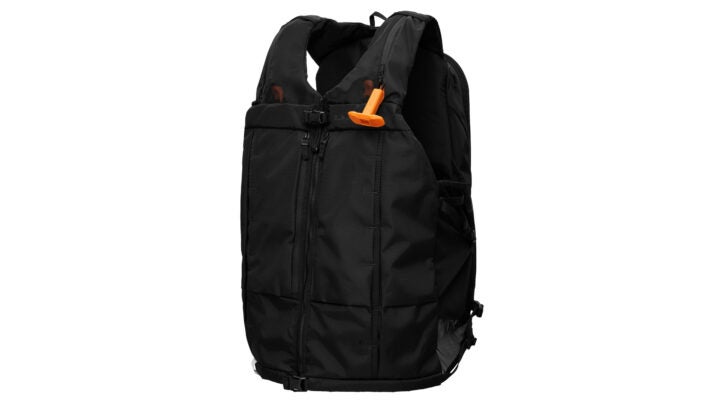
Weight: 4 lbs
Size: Unisex, one size
Pros: Less bulky and restrictive than a backpack
Cons: Mesh pocket fills up with snow on deep days
While avalanche airbags aim to keep users on top of the snow, the Snow Pro Vest, developed with the Norwegian Special Forces and School of Winter Warfare, is designed to keep athletes from asphyxiating when buried underneath the snow—the cause of 75 percent of avalanche deaths. After pulling a T-shaped handle, the Safeback SBX’s lithium battery-powered electric fan provides breathing assistance under the snow by pumping clean, oxygenated air through mesh tubes from the back of the vest to the air pocket around the victim’s face, all while pushing out exhaled carbon dioxide—no mouthpiece required. The brand alleges that this process extends the survival window from 15 minutes to up to 90 minutes in temperatures as cold as negative 22 degrees Fahrenheit.
Our Jackson Hole, Wyoming-based tester, Will Howard, assessed the fit and functionality of the Db Snow Pro Vest in Granite Canyon on stormy, clear, and powder days. (We didn’t test how well the breathing tech worked under the snow, for obvious safety reasons). “I was grateful for the easy access storage and large pockets on the front of the vest,” he said. “It made accessing gear like sunglasses for short hikes super easy and quick. When the vest is fully loaded with avalanche rescue gear, even on a chairlift, it rides very well and fits comfortably with less movement restriction than a backpack.” Testers also lauded the cinch design on the sides and angled straps that kept the vest snug to their bodies. The beacon-sized pump unit was barely noticeable, although some found the airflow tubes running along the shoulders to be slightly uncomfortable.
Bottom line: Best for sidecountry skiers in big terrain who want an extra lifeline when carrying their safety gear without a cumbersome backpack
Backcountry Access Float E2-25 Avalanche Airbag ($1,250)
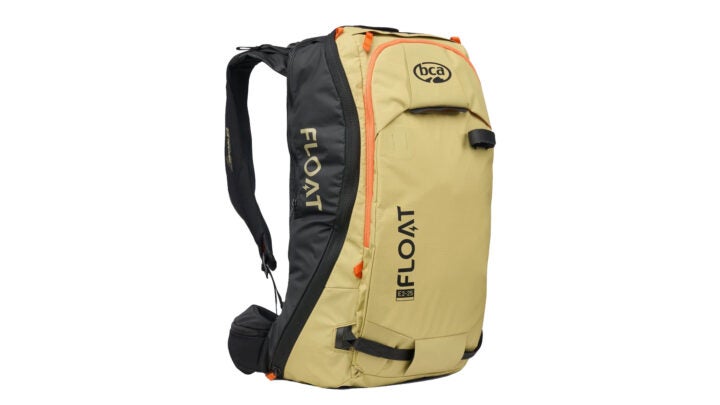
Weight: 5.7 lbs
Size: Unisex, S/M, M/L
Pros: Smart features and use of space
Cons: Airbag compartment zipper can split open when overloaded
Like many other avalanche airbag brands, BCA has expanded beyond traditional compressed air cylinders. The Float uses the new Alpride E2 system, which is 40 percent smaller and 25 percent lighter than its E1 predecessor. The E2 uses supercapacitor electromagnetic energy to drive the fan inflation, which means it’s less affected by cold temperatures than lithium-ion batteries, and can be recharged in the field with AA batteries after a deployment, making it ideal for multi-day tours. It’s also TSA-approved, so you don’t have to find somewhere to fill an air canister at your destination.
Beyond that smart battery tech, the Float packs tons of user-friendly ski features into a smartly designed package. Most notable among this year’s improvements is the sizeable sidestash pocket that easily provides access to on-the-go items without having to remove the pack. One tester brought the pack to a ski touring festival in the Balkans and was able to quickly stash skins and crampons during transitions and grab his water bottle and extra gloves with just one hand. The crotch strap clips into a carabiner on a loop sewn into the hip belt, so testers didn’t have to re-clip it every time they removed the pack. Both the fleece-lined goggle pocket and small items pocket in the avalanche tool compartment are easily accessible and don’t get in the way of zipping the pack when it’s stuffed full.
Bottom line: For the skier who ventures into avalanche terrain during high danger and doesn’t want a pack that requires too much fiddling
Garmin InReach Messenger ($300)
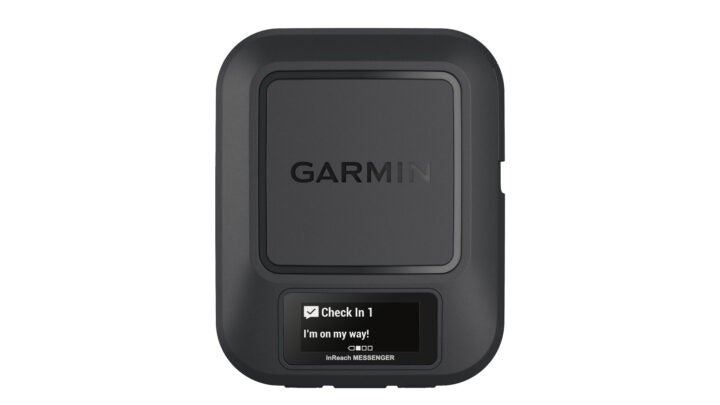
Weight: 4 oz
Pros: Small, powerful, durable
Cons: No navigation feature
Satellite communicators are becoming ubiquitous in the backcountry—usually one person in the group has one handy for checking in with loved ones, triggering SOS alerts, and communicating with rescuers in the event of an emergency. They’re also becoming smaller and more user-friendly with thanks to smartphone app integration. The InReach Messenger has all of the essential features you’d come to expect from a modern satellite communicator and more, all from a compact unit that fits in the palm of your hand. (Note: Unlike the InReach Explorer or InReach Mini, the Messenger does not provide GPS navigation.) Our West Elk Mountain Rescue tester in Colorado used it in temperatures as low as ten degrees, from deep inside sandstone canyons with limited view of the sky to forests with heavy tree cover to high mountain tops. He was pleased with the upgrades in a small package—in comparison, the Zolio weighs 5.3 ounces. “The messages sent extremely fast, even when the device was in my backpack,” he says. “My older Garmin InReach Explorer had to have a direct view of the sky and still took longer.” He used the accurate weather forecasting function often, and employed the 10-minute tracking mode to send his location to loved ones as he moved through the mountains for both recreation and on rescue missions. A phone will die before this messenger device: The battery lasts up to 28 days with a message or location sent every 10 minutes with a full sky view, and up to 46 days with a message or location sent every 30 minutes. If your phone does die, the tiny LED screen is still useful for sending short, preset messages and reading incoming texts. The Messenger can even charge a dead phone’s battery enough to connect to the app and fire out a few texts with embedded GPS coordinates.
Bottom line: For folks spending significant time outside of phone service that don’t need standalone GPS navigation
Ortovox Bivy Pro ($140)
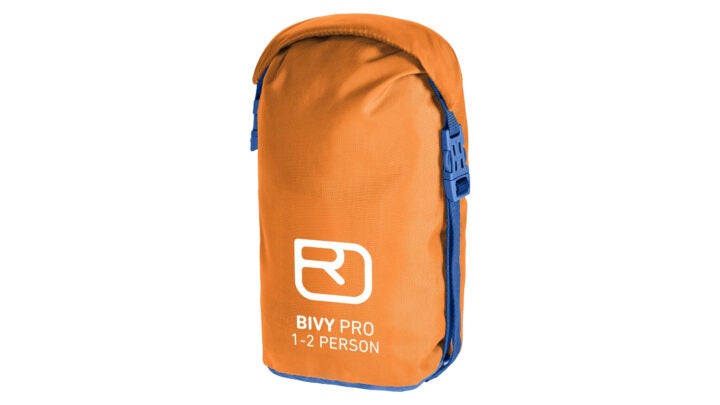
Weight: 1.5 lbs
Pros: Compact and multi-purpose
Cons: Not as light as the 9.8 oz single bivy version
A small tarp is almost standard equipment for a ski guide to have in their pack, as it can serve as an impromptu rescue sled to drag an injured or incapacitated person back to the trailhead or as a shelter during inclement weather. This compact, 50-denier polyester ripstop fabric bivy bag is water- and dirt-resistant, and has 16 loops for rigging purposes. The loops make it easy to attach paracord when using the tarp as a sled, or to set up an emergency overnight shelter (big enough for one person). The bright, orange color makes it visible for aerial rescuers to spot while the silver interior lining reflects body heat. Extra loops along the side allowed our tester to fix it into a sun awning with ski poles when the sun was beating down hard on a spring glacier.
Bottom line: Best for the backcountry traveler who goes far out and wants to be prepared for emergencies
WoolAid Emergency Pack ($6)
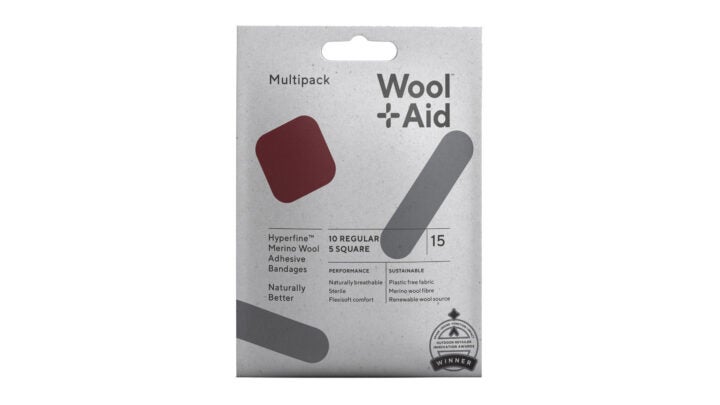
Weight: 0.5 oz including the package
Pros: Sticky and breathable
Cons: Sold in small batches
For many feet, blisters are inevitable as long as they’re in ski boots. That means never-ending Band-Aids, which means even more never-ending plastic floating around the planet. The New Zealand-made medical-grade, hypoallergenic Hyperfine merino wool bandages in WoolAid’s Emergency Pack from are not only biodegradable, but the wool’s natural vapor absorption helps draw moisture away from your skin, keeping wounds drier. Our tester also reported that the WoolAid adhesive stayed on many hours longer than a regular Band-Aid. The emergency pack comes with two extra-large and three regular-sized bandages in colors that don’t look like dead skin sloughing off your body.
Bottom line: An eco-friendly wound care alternative
Ledlenser NEO1R Headlamp ($50)
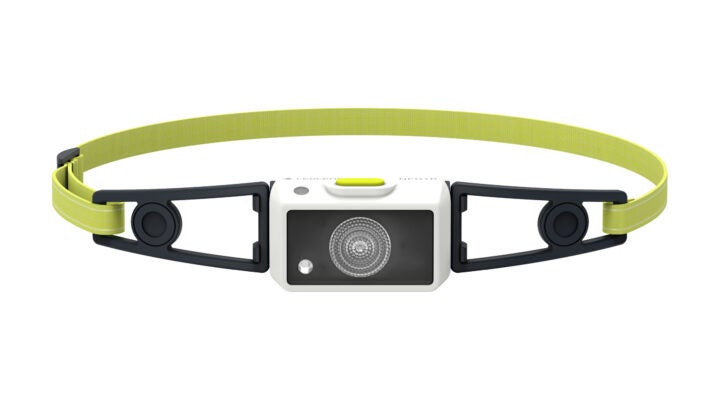
Weight: 1.4 oz
Pros: Light and bright
Cons: Proprietary magnetic charging cable is not universal
Many of us have that friend—or maybe we are that friend— who always forgets their headlamp. That friend needs a light that always lives in their pack. At just 1.4 ounces, the NEO1R pumps out between 20 and 250 lumens, depending on the setting, a tremendous lumens-per ounce ratio that makes it more than worthwhile to carry this light every day, whether or not you think you’ll need it. The beam pattern is ideal for fast-moving activities like skinning in the dark. Our tester used it for late spring ski missions, and the tilting position and red light functions kept it from blinding our partners. Secured with a reflective, minimalist elastic headband, it may look dainty, but it’s drop tested to six feet, waterproof rated to IP67 (30 minutes in 3 feet of water), and works down to negative 4 degrees Fahrenheit. The locking function prevents it from turning on accidentally and draining the battery when you jam it into your back pocket.
Bottom line: So light, compact, and powerful that it’s worth bringing with you every time
How to Buy
We love a good deal on second-hand gear. That said, when it comes to safety gear, it’s best to be the original owner. You never know what kind of compromising events someone else’s gear has been through, and the consequences of a malfunction are too high in this category. We recommend supporting your local independent gear shop and asking their experts for advice on which products are most suitable for you.
How We Test
- Number of testers: 9
- Number of products tested: 12
- Vertical feet skied: 448,000
- Miles ski toured: 275
- Tomahawk falls sustained: 3
- Beers carried to the top of Highland Bowl for closing day: 12
The level of innovation varies greatly between years. This season’s releases were more of a general refinement of existing technologies, with a few exceptions (Looking at you, Db Snow Pro Vest). Our testers, who are very familiar with many of the previous iterations of snow safety tech, love geeking out over the upgrades. Our testers brought this year’s new snow safety equipment out into extremely cold and varied winter conditions to see how it handled in the field—extra important when it comes to this category. They skied in temperatures down to minus 20 degrees Fahrenheit in Wyoming, hiked up spring ski mountaineering missions in 60-degree sunshine in Colorado, snowmobiled deep in the Alaskan backcountry, and traversed hut-to-hut in the Andes, all the while exposing some of the newest snow safety gear to every possible condition we could find.
Meet Our Lead Tester
Scott Yorko is a former gear editor for Backpacker, SKI, TransWorld SNOWboarding, and Outside. He lives in Western Colorado, where he splits his ski time between the world-class resorts around Aspen and backcountry terrain in the West Elk Mountains. He loves to chase storms and visit pow-shredding friends, many of whom tested this year’s crop of ski packs, in places like Alaska (Ryan Irvin @irvsinstastash), Jackson Hole (Will Howard @___chillly___), the Sierras, Utah (Kordell Black @kordellblack), and all throughout Colorado (Tyler Tworek @coulie_t).

